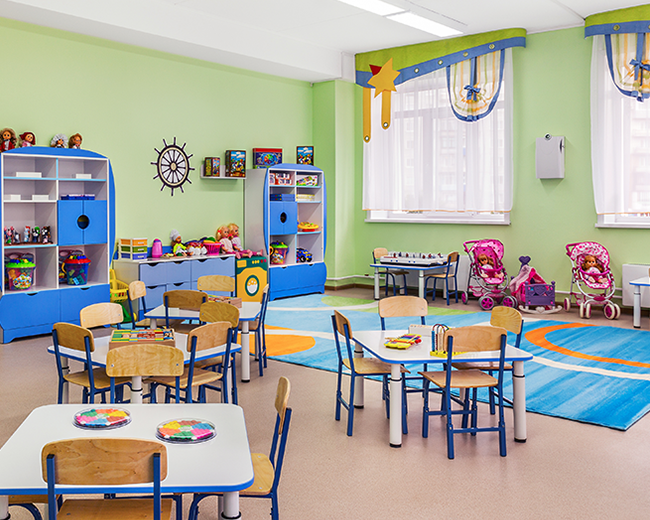Universal Design for Learning in the Early Childhood Classroom
Do you ever come across a classroom practice or schoolwide philosophy that resonates with you so completely that it’s as clear as a bell? Maybe you even think, “Why isn’t everyone doing this?!” Universal Design for Learning (UDL), the framework designed to make learning more accessible for everyone, would benefit early childhood in multiple ways This article explores guidelines to foundationally implement UDL for early childhood education.
Universal Design for Learning (UDL)
You may already be familiar with the concept of universal design. It’s what 21st-century wayfinding and accessibility out in the world is all about. It doesn’t just help those marginalized by disabilities or language barriers. Universal design makes things better and more accessible for everyone. (Think: curb cuts help out people with mobility issues, those pushing strollers, and those riding bikes). UDL takes a similar approach to universal design and provides a framework for educators that creates accessible, meaningful, and engaging learning based on neuroresearch and differentiates across a range of abilities, experiences, and home languages.
UDL isn’t a new approach. Its inception can be traced back to the founding of CAST (Center for Applied Special Technology) in 1984. Although cofounders Anne Meyer and David Rose initially were seeking a way to build a bridge to accessible learning through computer-based technologies for those with learning disabilities, their organizational mission became (and remains) to remove everyday barriers to learning for all. Over time and through many iterations, they developed the UDL framework and categorized it into three domains.
- Engagement (the why of learning)
- Representation (the what of learning)
- Action and Expression (the how of learning)
Best of all, each domain is connected to neurological processes and specific areas of the brain. If you’re like me and you geek out on brain-based research for teaching and learning, you’ll love this article about UDL and the learning brain from CAST.
UDL for Early Childhood
In early childhood settings, practitioners are constantly relying on an intrinsic “finesse” for differentiating for diverse learners that is not reliably scalable. The UDL framework, however, provides a unifying force for how early childhood practitioners approach teaching and learning, and it removes some of the guesswork inherent in meeting the diverse needs of all children.
For early childhood educators, the UDL framework is totally flexible to adapt to the needs of young learners and truly empower them to know themselves as capable, confident, creative, and collaborative thinkers. Using the framework and these updated guidelines, teachers have a powerful tool for meaningful, relevant, differentiated teaching and learning.
Environmental Awareness
UDL for early childhood is weighted heavily toward environmental awareness (the what of learning) and really seeing our settings through the eyes of our young learners: Are our settings safe, responsive, accessible, and culturally relevant? What is played with the most and provides motivating opportunities for deep play (the how of learning)? What skills are our learners developing through using the school environment and available materials?

Developmentally Appropriate Practice (DAP)
UDL for early childhood works best when partnered with a solid understanding of child development and developmentally appropriate practice (DAP). Knowledgeable early childhood practitioners using the UDL framework in concert with DAP will be equipped to proactively plan for differentiated learning rather than merely reacting (or relying on “finesse”).
Observation and Assessment
UDL for early childhood must include differentiated ongoing assessments that rely on a strong family-school partnership. To plan for the needs of diverse students, observing students informally and formally is key. Through observation and assessment, as well as through relationships with parents, teachers gain insight to a child’s prior knowledge and can understand the child’s abilities from a strengths-based perspective.
While these UDL early childhood guidelines provide a foundational perspective for implementing the UDL framework, the beauty of the framework is its flexibility. As reflective practitioners, we know that frameworks are best when we can ease them into our existing practice rather than trying to force in something rigid and rule based. We can start with baby steps and wobble (and iterate) our way toward new understanding and improved practice. Our 21st-century early learning centers should reflect the world we live in today, with access to meaningful learning for all children.
Categories:
Early Childhood EducationAuthor Bio:
View All AuthorsMolly Breen
Molly Breen, M.A., ECE, has worked with kids and families for nearly two decades as an educator. A believer in lifelong learning, her heart is in early childhood, where the seeds of curiosity, character, and community are planted. Through her work with children, as a practitioner in the classroom, Molly has developed a broad expertise in curriculum development and instruction, behavior guidance, and social-emotional learning. In her role as a program director, she has created innovative...
Join the Free Spirit Publishing Blog Community
Subscribe by sharing your email address and we will share new posts, helpful resources and special offers on the issues and topics that matter to you and the children and teens you support.
